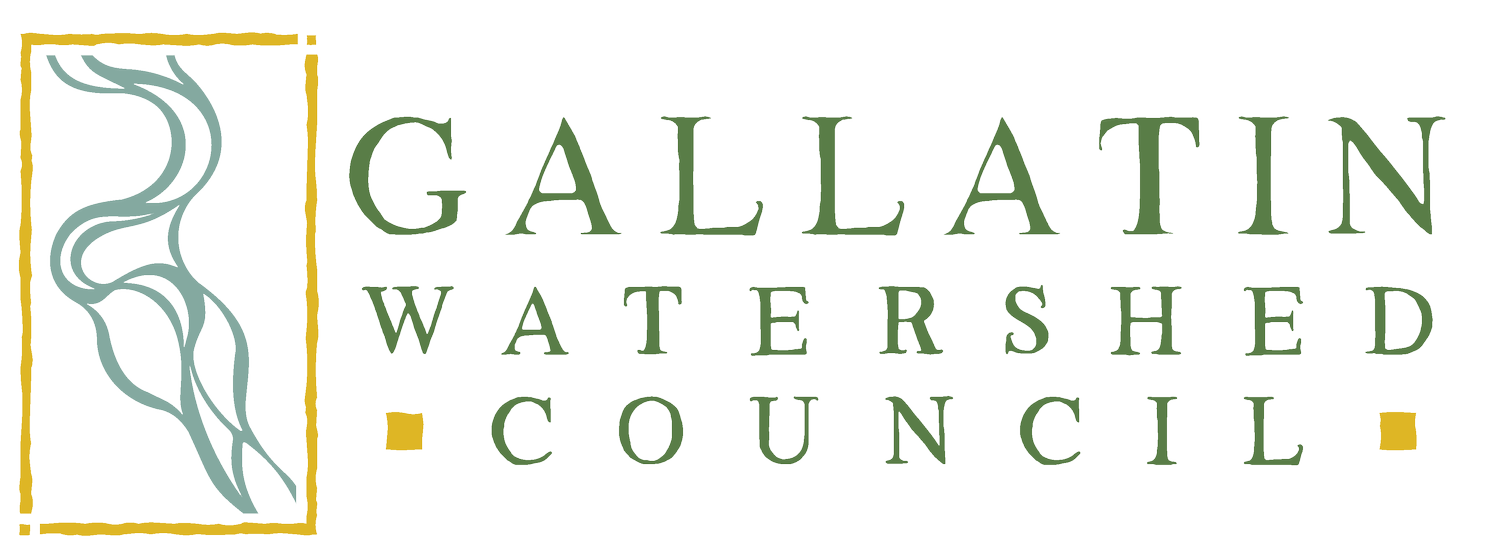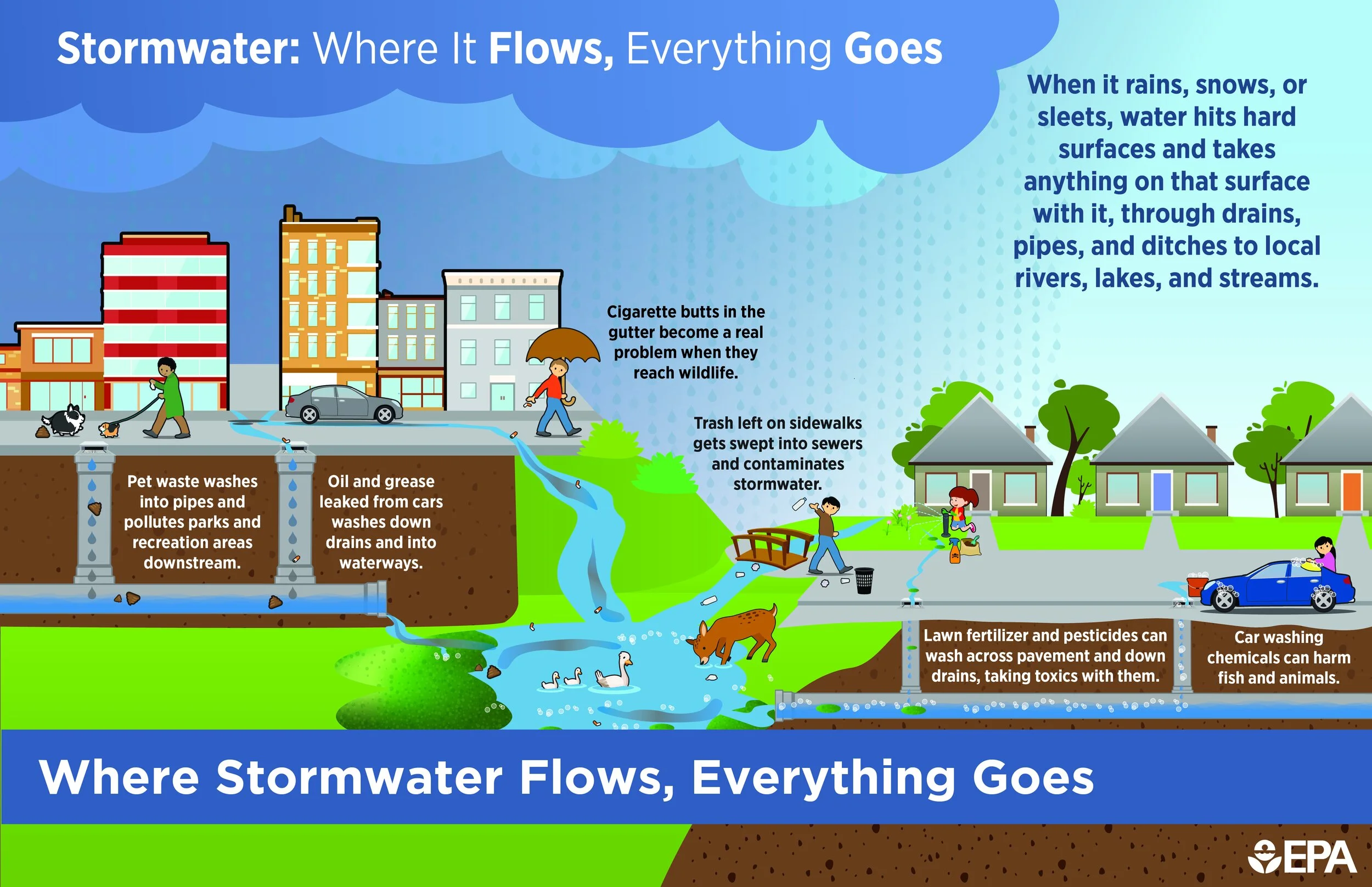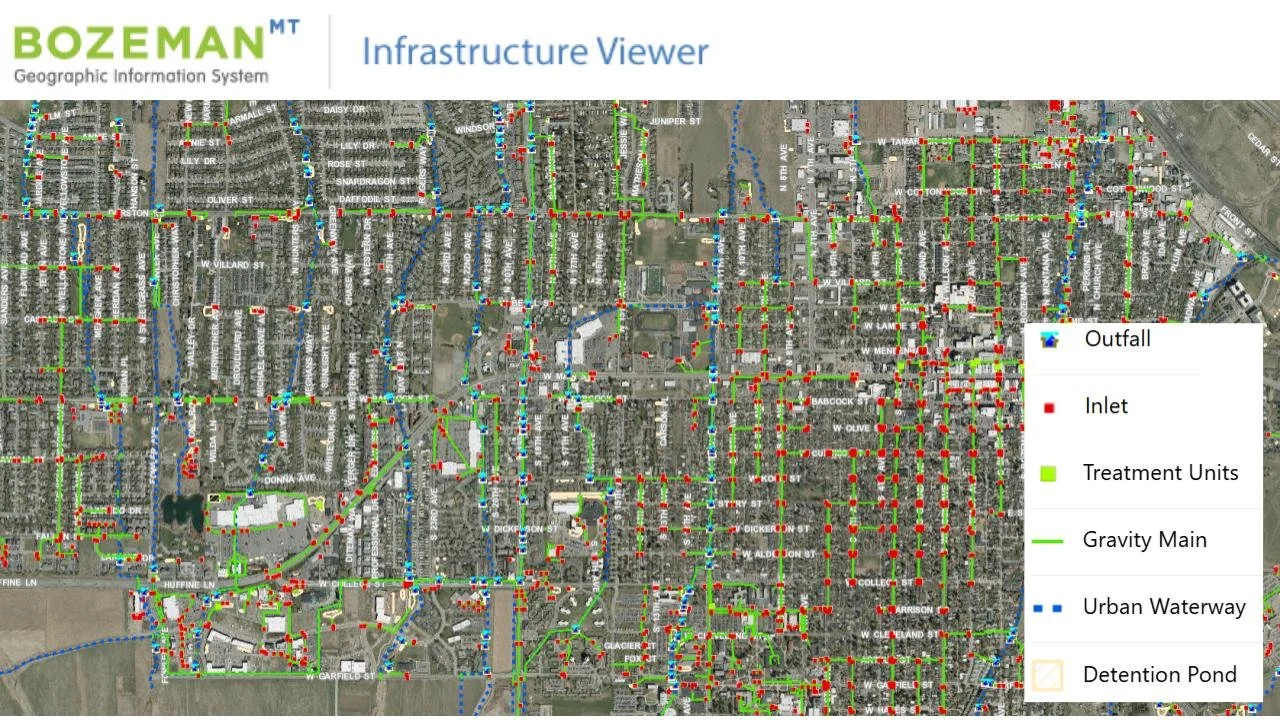The Secret Life of Urban Stormwater
by Abigail Sloot, Big Sky Watershed Corps Member
Stormwater is one of those things that we don’t often think about. Where does it go? How does it get there? What does it do along the way? Even when runoff is out of sight and out of mind, it continues to impact the quality of our watercourses. Ninety percent of pollution in Montana’s waters comes from nonpoint sources, from everywhere and everyone.
Of the Lower Gallatin Watershed’s 23 major waterbodies, 15 are classified as “impaired” by the Montana Department of Environmental Quality (DEQ). We are not alone - 75% of Montana’s waterbodies don’t meet DEQ’s standards because of excess nutrients, sediment, and pathogens. Pollutants generally come from two pathways: point sources and nonpoint sources. Point source pollution is just that - pollution that can be traced back to a single, identifiable source, like the pipe from the end of a sewage treatment plant. Nonpoint source pollution is diffuse and gets into our rivers, streams, ponds, and lakes as rainwater and snowmelt flow across the landscape, picking up everything in its path. In urban areas, common sources include motor oil and grease, road salt and traction sand, pet waste, lawn clippings, trash, and more. What started as a stinky pile of dog poop in Lindley Park can have real impacts on our aquatic ecosystems by introducing harmful nutrients and pathogens.
In Bozeman, rain, snowmelt, and the dirty, soapy water that runs down your driveway after washing your car all get collected by a complex network of inlets and storm pipes to keep our neighborhoods from flooding. We have separate stormwater and wastewater sewer systems, and our stormwater is not sent to the Bozeman Water Reclamation Facility to be treated. Some stormwater gets partial, low-tech treatment along the way, but some stormwater flows to the nearest creek with all its pollutants in tow. Even though these systems hide the pollution from view, it does not disappear.
How can we steward our backyard rivers and streams and reduce nonpoint source pollution? By volunteering! On Thursday, May 8, volunteer with the Gallatin Watershed Council, the Gallatin Valley Land Trust, and Outside Kind to clean up Bozeman’s trails and waterways of dog poop before the busy recreation season. You can also clean up trash from our community during the Spring Watershed Cleanup on Saturday, May 17. Both opportunities present an opportunity to make a tangible difference and connect with fellow community members. Want to go further? Here are some more ideas to reduce stormwater pollution in your everyday life:
Never dump anything down storm drains, including paint, cooking grease, auto fluids, etc.
Properly dispose of yard waste - do not leave leaves or lawn clippings in the road or near a stream
Cut down on fertilizers, pesticides, and herbicides, and don’t use them before a rainstorm
Properly maintain your septic system
If you are going to wash your car, do so at an established car wash instead of doing it at home
Adopt a Storm Drain through the City of Bozeman
Stormwater puddle on E Main Street in Bozeman
Despite our best efforts, some pollution will still sneak by. This is where treatment comes in. Treating stormwater can take a lot of different forms, including both built infrastructure and natural solutions. The Stormwater Division has installed 29 treatment units under the streets of Bozeman, which captured 82 tons of pollution in 2024! Large-scale natural solutions can look like the Indreland Audubon Wetland Preserve and Manhattan Treatment Wetland, which filter pollutants out and slow the flow of stormwater. To incorporate natural solutions in your personal life, consider installing a rain garden or planting native vegetation. Check our Streamside Landscapes Guide for a do-it-yourself, step-by-step resource.
Sitting at the headwaters of the Missouri River gives us a unique opportunity to care for our watershed and our downstream neighbors. Let’s do our part to protect our vital water resources. Every drop counts!



